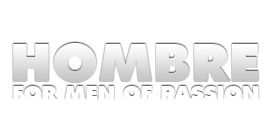4 Moves To Improve Your Running Performance
16 Jul 2020 by Lina Jordan in Ego, Excercise, Fitness, Fitness, General, Health, Health, Home, Pleasure

If you’re looking to improve your running performance, you may be wondering where to start. How does one get better at something which seems so simple and easy to master on the surface?
Located in the heart of New York City, Perfect Stride is one of the leading physical therapy clinics, renowned for their research driven and personalized services. Here they share 4 moves to improve your running performance.
1. Jump Roping – this can help you improve the elastic nature of the tendons and tissues at the foot ankle, meaning that they can store and release energy more efficiently. This can greatly help improve your running efficiency and also your ability to generate force quicker (run faster).
Pro Tip: you can set a metronome and help train your cadence while jumping rope.
2. Training in Single Leg Stance – running is a series of single leg hops repeated over and over again. So, if you are unstable on one leg, your likelihood to become injured increases. Try to introduce activities such as standing on one leg while maintaining a stable foot (can you keep your big toe down on the ground?) and then gradually progress to more dynamic movements such a single leg dead lift.
Advancing further you would want to add some speed to the equation, this is where single leg hops, box jumps/drops and ladder drills are great!
3. Breath Work – this is one aspect of training for runners that goes overlooked a large majority of the time.
We want to be able to train our aerobic system to work as efficiently as possible. Something as simple as introducing nasal breathing into your runs can have a profound effect on your training.
4. Mobility Training – do you have the mobility that is required to run? If not, your body will find other ways to accomplish the task, meaning that your body will compensate somehow. This will lead to inefficient movement patterns and also an increased risk for injury. We know that your great toe, ankle and hip all require a certain amount of mobility to be successful.








